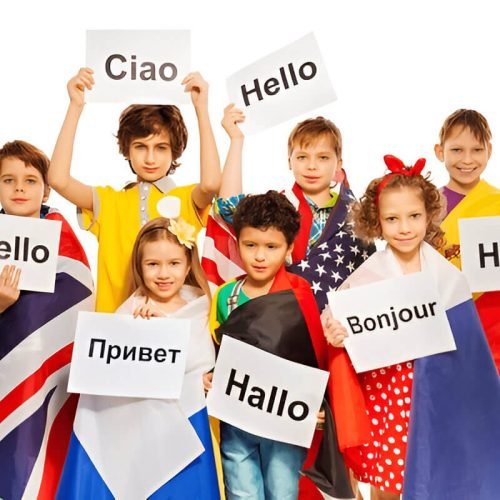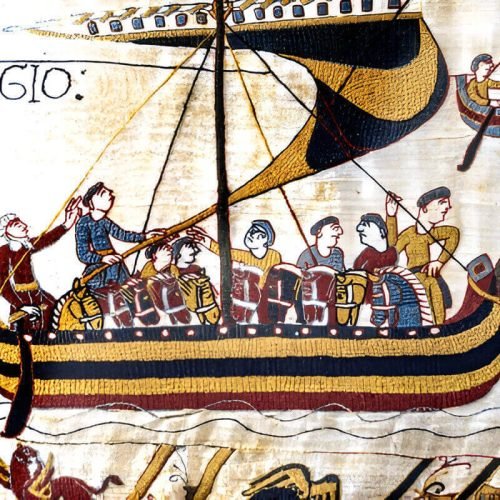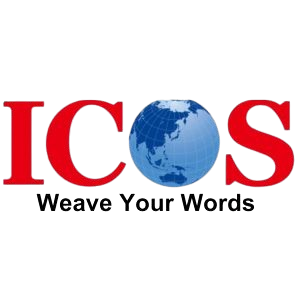Which Language Is Most Spoken in Europe? A Full Scoop of Surprises for you!

Which Language is Most Spoken in Europe?
You will be astonished to learn that the answer is Russian. Russian is the most widely spoken native language in Europe, with more than 150 million speakers dispersed throughout Russia, Belarus, Ukraine, and portions of Eastern Europe.
But wait—if you take into account people who speak English as a second language, English becomes the dominant language in worldwide business and communication.
Why does Europe have such an interesting language environment despite being a relatively small continent?
Its past, which is a patchwork of contemporary nation-states, historic empires, and cultural intersections, holds the key to the solution. Every language used here represents centuries of migration, trade, and tenacity, and is a thread in the colorful tapestry of Europe..
A Language Map Shaped by Culture and Heritage
With almost 200 languages spoken there, Europe is a linguistic gold mine. Communication is only one aspect of it; identity is another.
Every language tells a tale of a civilization that flourished, collapsed, and then rose again, from the Slavic origins of Polish and Czech to the Romance melody of French and Italian.
But this isn’t just a history lesson—it’s about relevance today.
In business meetings, English rules the boardrooms. For travellers, Spanish and French open doors to warm Mediterranean smiles. For those navigating the cultural fabric of Eastern Europe, knowing Russian can make all the difference.
Languages aren’t just words strung together—they’re keys to the unique locks of human connection. As we explore which languages dominate Europe and why, we’ll take note of not only the most spoken tongues but also the cultural and historical threads they represent.
Because speaking the right language is personal in Europe.
Shall we dive in?
Table of Contents
Most Widely Spoken Languages in Europe: A Cultural Tapestry

Europe’s linguistic diversity is nothing short of astonishing. At the forefront are languages like English, German, and Russian, each spoken by millions of people.
- English is the universal language of communication.
- German thrives as the economic powerhouse of Central Europe, and
- Russian dominates Eastern Europe because of its deep historical and cultural ties.
Each language is a gateway to understanding the people who speak it.
But beyond the big names lie other widely spoken tongues like Spanish, French, and Italian, which enchant with their romance and rhythm. These languages aren’t just tools for communication; they’re deeply tied to art, music, and cuisine. From Spanish flamenco to French haute couture, the influence of these languages on global culture is undeniable.
The beauty of Europe’s languages is in the emotions and connections they carry.
The warmth of “Ciao” in Italy, the cheer of “Hallo” in Germany, and the heartfelt “Privet” in Russia. Every greeting carries centuries of tradition, making Europe’s linguistic tapestry a living, breathing piece of history.
Fun Fact:
Did you know that German has the longest compound words in the world? Rechtsschutzversicherungsgesellschaften (insurance companies providing legal protection) is a mouthful even for native speakers!
Official Language in Europe for Business: The Multilingual Advantage

When it comes to business, English is the undisputed king in Europe. It’s the language of boardrooms, emails, and international deals. But English isn’t the only language you’ll hear in a business setting.
Russian, as the language of Europe’s largest economy, commands respect and practicality. Meanwhile, French and German, with its diplomatic finesse, often seals deals in the blink of the eye.
For regional trade, languages like Russian and Spanish play a crucial role. Russian acts as a bridge across Eastern Europe and parts of Asia, while Spanish is key in connecting Europe to Latin America. In fact, speaking multiple languages in Europe is more than a skill—it’s a necessity for success in a culturally rich and competitive market.
Interestingly, the choice of language can often influence negotiations.
A simple “Merci” or “Danke” can open doors to deeper trust. Businesses that invest in multilingual communication, from translation services to language learning programs, don’t just expand their reach—they gain a competitive edge in Europe’s diverse market.
Surprising Insight:
Studies show that speaking your business partner’s native language can increase trust and improve negotiation outcomes by up to 50%!
Major Language Groups in Europe:
Top 15 List of European Languages That Shape the Continent
Language | Reason for Importance | Context |
English | Global business language, widely spoken across Europe | Acts as the primary language for international trade, diplomacy, and education in many EU countries. |
Russian | Most native speakers in Europe, key for Eastern European relations | Widely spoken in Russia and neighboring countries; crucial for trade and historical influence. |
German | Europe’s largest native-speaking population and economic powerhouse language | Essential for industries like engineering, manufacturing, and technology. |
French | Language of diplomacy, arts, and culture; official in several EU institutions | Renowned for its cultural legacy and legal and governmental sway. |
Spanish | Second most spoken native language globally; increasing importance in trade | Significant due to Spain’s tourism industry and cultural exports like literature and film. |
Italian | Renowned for its cultural and historical legacy | Integral to art, fashion, and culinary industries, with strong ties to heritage preservation. |
Polish | Largest Slavic language in the EU | Important for labor migration and trade within the EU. |
Dutch | A key language in commerce, particularly in logistics and shipping | The Netherlands’ strategic role in global trade makes Dutch valuable. |
Portuguese | Important for European and global trade; spoken widely outside Europe | Portugal’s influence, coupled with Brazil’s economic ties, enhances its significance. |
Swedish | Major Nordic language, crucial for Scandinavian trade and cooperation | Strong connection to sustainability and technology industries in Europe. |
Czech | Gateway language for understanding Central Europe | Vital for historical research and regional trade. |
Greek | Root of many European languages; historical and cultural significance | Foundational for understanding Western philosophy and literature. |
Hungarian | Unique non-Indo-European language; central to Hungary’s identity | Highlights linguistic diversity and the importance of Central Europe in European politics. |
Romanian | Eastern Romance language, connecting Latin and Slavic cultures | Bridges Western and Eastern Europe; growing in tech outsourcing. |
Serbian | Essential for the Balkan region | Key for geopolitical relations and understanding Southeastern Europe. |
Fascinating Facts About European Languages
Did you know that Basque, spoken in parts of Spain and France, is a linguistic mystery with no known relatives? Or that Finnish and Hungarian aren’t even part of the Indo-European family, setting them apart from most other European languages?
These are just a few of the quirks that make Europe’s linguistic landscape so fascinating.
Europeans are famously multilingual. The average European speaks two to three languages, with countries like Luxembourg boasting nearly universal multilingualism.
This polyglot culture isn’t just a modern trend; it’s a survival skill shaped by centuries of trade, migration, and diplomacy.
Languages in Europe aren’t static—they evolve with the times. New words constantly enter the lexicon, influenced by technology, pop culture, and globalization.
For instance, English borrows from French, while Spanish absorbs indigenous words from Latin America. This dynamism keeps Europe’s languages alive and ever-changing, reflecting the continent’s adaptability and creativity.
Fun Fact:
Europeans are famously multilingual. The average European speaks two to three languages, with countries like Luxembourg boasting nearly universal multilingualism.
Indo-European Language Map: Connecting the Dots Across the Continent
The Indo-European language family is the backbone of Europe’s linguistic diversity, spanning from the icy fjords of Norway to the sun-drenched shores of Greece. These languages share common roots, tracing back to ancient Proto-Indo-European, which likely originated thousands of years ago in modern-day Ukraine or Kazakhstan.
The map splits into branches like Romance, Germanic, and Slavic, but it also extends beyond Europe.
Persian, Hindi, and Bengali are Indo-European languages too, showing the far-reaching influence of this family.
Understanding this map isn’t just about linguistics; it’s about history and culture. It’s a reminder of how interconnected we are, despite our differences.
By studying the Indo-European connections, we gain insight into the migrations, conquests, and exchanges that shaped not only Europe but much of the modern world.
Fun Fact:
The word “night” (noche, Nacht, noc) sounds almost identical in many Indo-European languages—showing just how intertwined we are across borders!
FAQs:
Russian holds the title for the most native speakers in Europe, while English dominates as the most widely used language for communication.
On average, Europeans speak 2-3 languages, with multilingualism being a cultural norm in many regions.
Europe’s rich history of migration, conquests, and diverse cultures has resulted in a mosaic of languages, each reflecting unique identities and traditions.
English and Russian are the primary languages for business and international communication, but no single language can claim dominance across the entire continent.
Russian is widely spoken in Russia, Belarus, Ukraine, and parts of Estonia, Latvia, and Lithuania, often as a second language.
Signing Off:

The linguistic diversity of Europe is a dynamic phenomenon that is still influencing its future rather than merely being a holdover from its history. It’s an opportunity to experience Paris or Rome’s streets not just as a visitor but as a person who can actually fit in.
However, this diversity has an intriguing twist: it benefits the increasingly interconnected world.
Companies are realizing that language limitations are now possibilities rather than obstacles. A transaction can become a relationship if you can market a product with cultural accuracy or greet a partner in their native tongue. Translation services are no longer just instruments; they are now conduits to unexplored markets, successful partnerships, and memorable first impressions.
And here’s where the real opportunity lies: YOU.
Europe’s linguistic diversity is more than simply a residue from its past; it’s a way of life. Whether you’re a business owner hoping to grow internationally or a language enthusiast, the next step is straightforward.
Investigate the ways in which translation services can expand your audience and foster genuine relationships. Take part in Europe’s linguistic mosaic rather than only admiring it.
Contact our team today
To begin your journey across Europe's cultural & linguistic landscapes.
Let's make communication your greatest strength
Connect now
